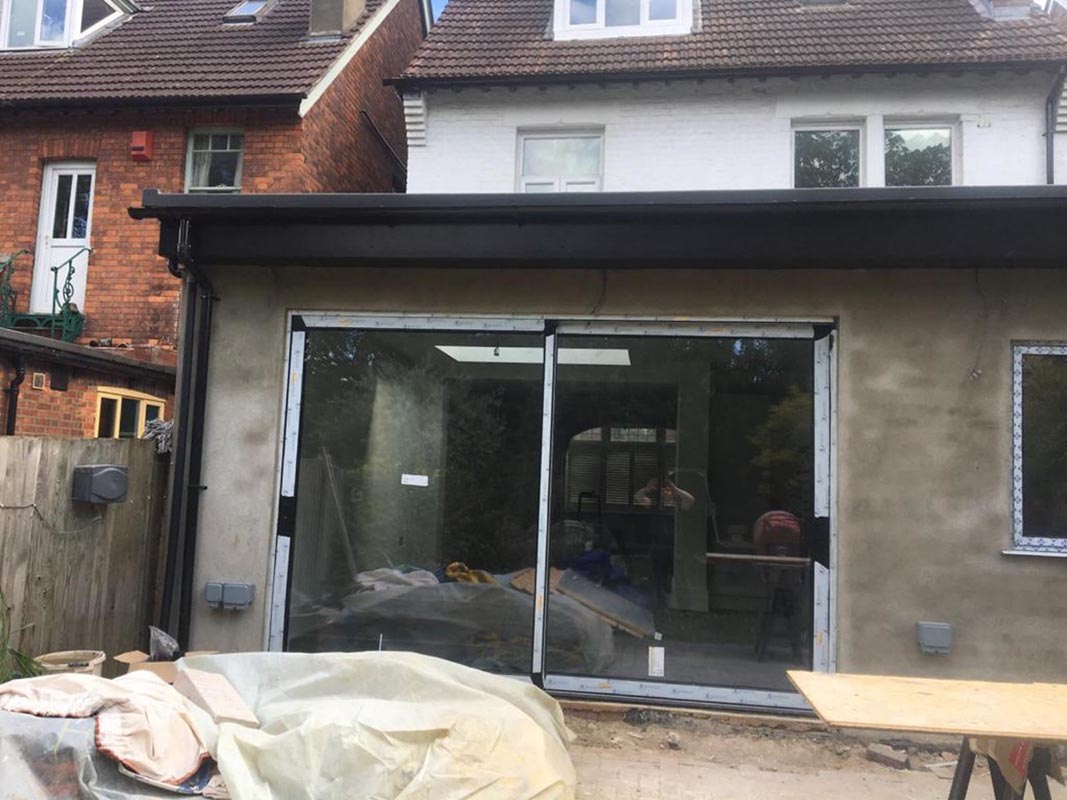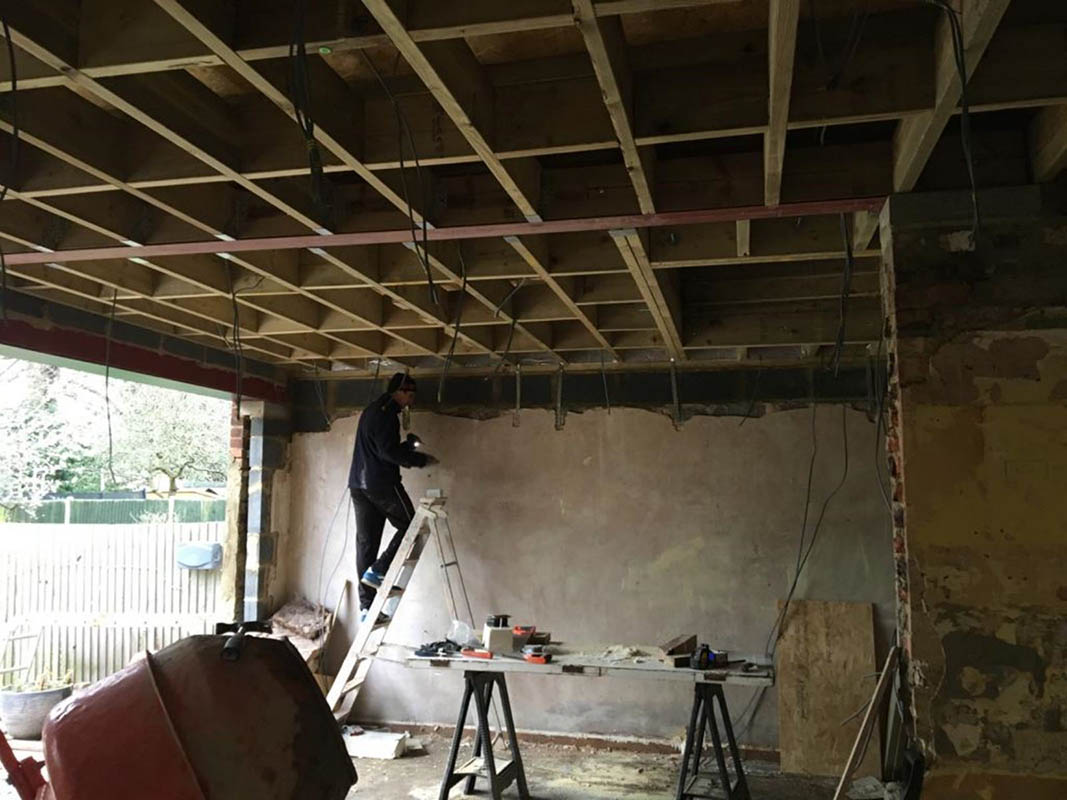
Making the loft space into a multi-use habitable room always raises one question: how much value does a loft extension and conversion add to your house? Homeowners are reluctant to jump to this kind of home renovation unless they are going to get their money’s worth. And it’s easy to see why.
Nevertheless, this seems like a tricky job. It matters how much time, effort, and money you are willing to invest, as well as whether your existing roof structure can actually handle any modifications whatsoever. Not to mention, you may have to ask local authorities for planning permission somewhere along the way, and this could throw a spanner in the works and up the cost.
Before you begin, there is no doubt you have to plan. Read on to get all the details regarding your next attic project and how to make it right so you manage to add value to your home.
How Much Value Does a Loft Conversion Add?

It is generally agreed that a loft conversion project can add between 10% and 21% to the value of a home if done right. Suppose that your property is valued at £100,000, then you could easily up its price by £10,000 to £20,000. Respectively, the higher that cost of a loft conversion, the bigger the increase.
That said, you should not forget that a project of this magnitude comes at a price too. Before it adds value to your home, you have to fork up a significant amount of money, put in lots of effort, and invest your time into it. If you are ready to do that, then there is no stopping you from transforming your existing roof structure and raising house prices on the housing market to your advantage.
So, are loft conversion costs worth it in the end? Yes, provided that you are diligent and careful. To save yourself a few headaches, appoint skilled and qualified technicians to make all the calculations. Obtain quotes from several companies on the market to get a better grasp of the matter.
Types of Loft Conversion
There is a type after type of loft conversion to suit every house structure and preference. Here is some info about each option.
Hip-to-gable loft conversion
The sloping side, or hip, of your roof is right where it can be extended using the hip-to-gable conversion. It happens by building an uptight wall and then extending the roof to fill in the rest of the space. This includes a brick slip cladding on the outside and it is supposed to match the structure and colour of the existing structure. In most cases, timber is used to do this type of loft conversion. No planning permission is required but as with everything, each case is unique and should be reviewed individually. Hip-to-gable can turn an irregularly-shaped space into the perfect rectangle.
Dormer loft conversion
With this type of conversion, dormers are added to the loft, in most cases to the rear of the structure (and it does not normally need planning permission). However, they can be attached to the front or side of the property as necessary (may need permission). Basically, dormer windows help to extend the attic vertically, hence they provide more headroom and space in general, making the room liveable. Because of that, pitched or flat dormer loft conversion is the most popular choice. You can get ideas and inspiration by reading our top dormer loft conversion ideas.
Velux loft conversion
If you are short on time, no worries, as Velux conversion takes the least amount of time. It is easy to build and can be executed in under 6 weeks. The main part of the job is to trim down one part of the roof space to be able to attach a set of windows basically. In case you don’t know, Velux is a well-known manufacturer of windows, hence the name. You need ample headroom at hand to get started with this project, though. It lets more natural light in without much building work in place. Velux has the lowest loft conversion cost.
Mansard loft conversion
Boasting a flat roof on one side and a sloping segment on the other, reaching an angle of 72 degrees, this type of loft conversion is typically carried out to the rear of the building. Its name comes from a famous French architect from the 17th century. Mansard conversion can suit almost any type of house, which is what makes it a desirable, yet expensive option. Truth be told, this one requires plenty of elbow grease since the extent of the construction is unmatched compared to that of other types of loft conversion. In fact, it adds lots of additional space inside the attic enabling it to serve as a full-blown room. For the most part, this type of conversion calls for planning permission.
Loft Conversion Costs: How Much Does it Cost for a Loft Conversion?

Converting a loft is a serious and expensive job that can go along the lines of £20,000-25,000 as the very minimum. Depending on the size of the project, the need for planning permission, and the living area, loft conversion prices can often run the staggering £60,000. Despite that, home extensions are a considerable expense, with costs per square metre floating around £1,200 per m².
Important Considerations to Make Before You Start Any Loft Conversions
A new loft can be a thrilling update to your home but do you have what it takes to get it going? Here are a few things to take into account prior to the onset of the project.
Do you have access to your loft in the first place? This is perhaps one of the most vital questions to ask yourself. Why? Because if you don’t initially have stairs leading straight to the loft, you are in for some struggles. Adding stairs will require additional building work, which will extend the length of your project and add to the cost.
Not to mention, you still need to comply with the existing building regulations in your area, including fire safety standards and all, as this will count as a home extension. Now, extensions are a category in and of themselves. There are certain criteria to meet, such as headroom clearance (a minimum of two metres measured vertically below and above the stairs). Unless you adhere to the predetermined laws, you may not be granted permission to continue with your project.
Who is going to get the job done? Loft conversions can be a lot of hassle if you don’t have the expertise to handle it. If you find someone who knows their way around building and extensions, you will spend less time worrying about it. That is, as long as you don’t mind having strangers around the house for some time until the work is finished.
But since you have made up your mind to embark on such a project, we assume you have come to terms with that fact already or are halfway through. Finding the perfect loft conversion specialists is not easy but not impossible either. Do your homework on how to find quality builders. Get quotes from various places and compare prices to get an idea of what to expect.
Do you need planning permission? Now, as you know, some building works require planning permission and whether your loft conversion falls under that category will depend on the scale of changes you want to make. For example, a hip-to-gable loft conversion can go through without planning permission or other local authority approval. Please, keep in mind that conservation areas are subject to slightly different regulations.
Last but not least, under the Party Wall Act, some building jobs require that you notify your neighbours of any ongoing construction work that is about to happen. If you are unaware of all these requirements, talk to the experts. The best way to nail your loft conversion is to contract an experienced company to take care of all the details.
Advantages of Loft Extension
- A loft conversion is the perfect option when you desire to add more room into your home but don’t want to perform house extension. It saves you time and some extra hassle that dealing with building regulations comes with. Plus, it is more cost-effective.
- Velux roof windows are of great help when you are not allowed to make bigger alterations on the façade because it might overshadow your neighbour’s property. With traditional home extensions, you have to comply with strict guidelines to be given the green light to make any modifications to your house exterior. Sometimes they are so strict that it defeats the purpose of the work you want to do.
- Loft conversions enable you to make use of vertical space and, technically, build upwards instead of taking up valuable horizontal space. Therefore, you will not lose any driveway or backyard space.
- Loft conversion price is another factor to add to the pile of advantages. When compared to general property extension, a loft conversion proves more affordable. Furthermore, it is faster to perform. Not only that, but it can be a valuable investment into the future in case you decide to sell your property one day because it will add value to your house.
Disadvantages of Loft Conversion
- Loft conversion may take away from your storage space. Most households use the attic to store belongings they don’t use all the time. Before you transform your loft into a liveable space, you will have to move all the stuff it accommodates away which will affect the other rooms. This will lead to less storage space altogether.
- Not every property is eligible for a loft conversion, especially those with a low pitched roof.
- Not all conversions will add adequate horizontal space across the entire loft to provide the right conditions for a bedroom. If you intend to use your loft as a room, it may be difficult to fit in furniture or get enough head height to stand up. Make sure to consider roof height first.
- As mentioned before, according to the Party Wall Act, you need to make your neighbours acquainted with some upcoming building works well ahead of time so they are prepared. Converting your loft may or may not fall under this act depending on the scale of the job.
- Loft conversion costs can still get exorbitant, even though this type of home improvement is much more affordable than a property extension. To avoid unpleasant surprises, ask for quotes from various contractors and don’t forget to check what’s included.
Questions & Answers

How much does it cost to convert a loft into a bedroom?
Transforming your attic into a full-on bedroom is capped at £15,000 and for the most part it starts at £6,700. The absolute minimum for this one is £5,000.
How much does a loft conversion cost in general?
It runs between £20,000 and £60,000 depending on the type of conversion and space available. Roof light conversion is the cheapest, as it only involves placing large windows over the roof structure.
Is it cheaper to do a loft conversion or an extension?
Yes. Truth is, loft conversions don’t cost merely as much as home extensions. So, if you’re looking for a great way to increase the value of your property that won’t put a dent in your wallet, opt for loft conversion.
How long does a loft conversion take?
Expect to spend 4 to 8 weeks on your loft conversion depending on the changes you want to implement. There are many factors that can move the deadline farther, including the need to abide by local building regulations and adverse weather. It takes time to obtain planning permission. So, expect the unexpected and try to stay realistic.
Can you do a loft conversion on a semi-detached house?
Yes, of course. The simplest way to go about it is to attach windows, which will add more roof light but not significant space into the loft.
Can you fit an en-suite bathroom in your loft?
Absolutely, but it is going to be a little bit more difficult and burdensome moneywise. Additional plumbing work will be necessary. You may need to add a brick wall, which will require planning permission. Make sure to ask yourself whether you really want an en-suite bathroom at such a place in your house and if it will be convenient to use.
Do loft conversions add more roof light?
It depends on how you go about it but in general, it can provide more roof light if that’s what you are aiming for.
Bottom Line on Loft Conversions for Home Value Increase
Loft conversions are a great way to add the so-coveted value to your home. Not only do they add more space, but they can turn a useless place into a liveable loft room. There are different types depending on which you can increase the amount of natural light that enters the space. But at the same time, converting your loft space is a laborious job that needs good planning.
For best results, hire a local loft conversion and extension company to do all the work for you, from the tiniest details to the knockdown of walls. They will examine your loft areas and provide professional tips. Ask for quotes beforehand to know if this is something that fits your budget.
Since loft conversions have an impact on the roof as a whole, they don’t take space away from the garden or backyard, which is a huge plus. However, storage space might be hampered. Thus, you have to list your goals and see if they would fit a project of this magnitude.
